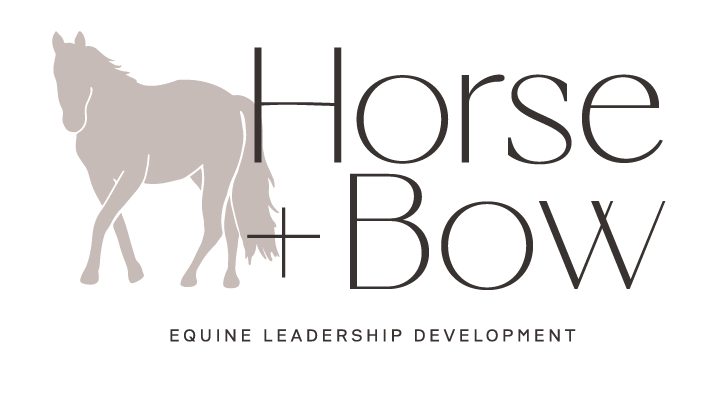How Can Leaders Overcome Employee Resistance to Leadership Development
Employee resistance to participating in leadership development initiatives occurs when team members hesitate or refuse to engage in programs designed to build their leadership competencies. This reluctance often stems from fear of judgment, uncertainty about outcomes, or a lack of trust in the process. In this guide, you will discover proven strategies—ranging from identifying early warning signs to leveraging change management models and experiential learning—to overcome resistance effectively. We’ll examine the common causes of pushback, the power of transparent communication, authoritative frameworks like ADKAR, measurable benefits and ROI, the unique impact of equine-assisted and archery-based programs, culture-building tactics, and practical monitoring steps. By the end, you’ll be equipped to foster genuine buy-in and transform skepticism into motivation for leadership growth.
What Are the Common Causes of Employee Resistance to Leadership Development?
Employee resistance describes the opposition or hesitation individuals exhibit when faced with leadership training opportunities, driven by perceived risks or unmet needs. Understanding these root causes helps leaders design development initiatives that address concerns rather than ignore them. For example, when a team member fears being exposed, clarifying confidentiality and support mechanisms can shift their mindset toward engagement.
Before exploring specific psychological and organizational barriers, the table below outlines the primary resistance factors, how they manifest, and their impact on participation.
| Barrier | Root Cause | Participation Impact |
|---|---|---|
| Fear of Judgment | Worry about negative evaluation by peers | Reduced willingness to share or enroll |
| Uncertainty about Value | Lack of clarity on program benefits | Low registration and engagement rates |
| Lack of Trust in Leaders | Perceived insincerity or hidden agendas | Skepticism toward program motives |
| Change Fatigue | Exhaustion from continuous initiatives | Decline in attendance and active involvement |
These factors often interconnect, so addressing one without the others leaves participation gains fragile and short-lived.
How Do Fear, Uncertainty, and Lack of Trust Impact Participation?
Fear, uncertainty, and lack of trust undermine willingness by creating psychological barriers that block open engagement. When participants doubt program relevance or leaders’ intentions, they mentally withdraw and avoid committing time. For instance, if the “why” behind training isn’t communicated, employees assume hidden motives and resist signing up. Reinforcing the purpose and maintaining transparent dialogue reduces anxiety and cultivates confidence in the process.
What Is Change Fatigue and How Does It Affect Employee Buy-in?
Change fatigue occurs when employees are overwhelmed by back-to-back initiatives, causing disengagement and resentment. Continuous rollouts without downtime leave teams drained, and leadership development can feel like “just another” obligation. By recognizing signs of fatigue—such as frequent absences or passive participation—leaders can space initiatives and integrate restorative practices to renew energy and willingness to learn.
The Impact of Change Fatigue
Change fatigue, resulting from an overload of initiatives, can lead to disengagement and resentment among employees. Continuous implementation of new programs without sufficient downtime can leave teams feeling drained, making leadership development initiatives seem like just another obligation. Recognizing the signs of fatigue, such as frequent absences or passive participation, allows leaders to space out initiatives and incorporate restorative practices to renew energy and willingness to learn.
Brougham, D., O’Neill, T., Lamberton, G., & Kelliher, C. (2014). The role of change fatigue in the relationship between organizational change and employee outcomes.
This research supports the article’s discussion on the importance of recognizing and addressing change fatigue to maintain employee engagement in leadership development programs.
How Can Early Warning Signs of Resistance Be Identified?
Early warning signs of resistance include sudden silence in meetings, missed deadlines for development tasks, and negative comments about program relevance. Spotting these indicators requires attentive observation and open channels for feedback. For example, if participants avoid workshop icebreakers, it signals underlying discomfort that should be addressed before full rollout to maintain engagement momentum.
How Can Transparent Leadership Communication Foster Buy-in for Development Programs?

Transparent leadership communication combines clear messaging, active listening, and iterative feedback to build trust and clarify the “why” behind initiatives. By defining objectives, expected outcomes, and participant benefits upfront, leaders reduce uncertainty and align employee motivations with organizational goals. For example, outlining how improved leadership skills link to promotions fosters tangible relevance.
The following list details effective communication strategies that foster buy-in:
- Articulate the Vision Clearly. Leaders should explain how the program aligns with company goals and individual growth opportunities.
- Use Storytelling to Illustrate Impact. Sharing success stories of past participants creates emotional resonance and reduces skepticism.
- Tailor Messages to Audience Needs. Address specific team concerns—such as workload or career aspirations—to demonstrate empathy and relevance.
These strategies establish a foundation of understanding and readiness that preempts resistance and primes participants for transformation.
Building Trust through Active Listening and Empathy
Active listening involves paraphrasing concerns, asking open questions, and validating feelings to demonstrate genuine interest. Empathy bridges the gap between leadership intent and employee experience, promoting a culture where feedback is safe and valued. When a leader acknowledges stress about time commitments, they can co-create flexible schedules or micro-learning modules to accommodate busy calendars.
How Can Leaders Use Feedback Loops to Address Employee Concerns?
Implementing structured feedback loops—such as quick pulse surveys, one-on-one debriefs, and suggestion boxes—ensures ongoing dialogue. Regularly reviewing input and visibly acting on suggestions signals respect for participant voices and enhances program credibility. For instance, adjusting session times based on survey results shows responsiveness and reinforces commitment to participant success.
Which Change Management Models Support Leadership Development Engagement?
Integrating change management models into leadership initiatives provides a structured roadmap for addressing resistance and sustaining commitment. The ADKAR model, for example, sequences Awareness, Desire, Knowledge, Ability, and Reinforcement to guide individuals through each phase of change, ensuring comprehensive support. Applying such frameworks clarifies progress markers and tailored interventions.
Before diving into best practices, the table below compares popular change management models and their leadership application focus.
| Model | Stage Focus | Leadership Application |
|---|---|---|
| ADKAR | Individual readiness phases | Builds participant desire and skill reinforcement |
| Lewin’s | Unfreeze – Change – Refreeze | Emphasizes establishing new behaviors in leadership |
| Kotter’s | Eight-step process | Aligns vision creation with rapid wins and culture |
Choosing the right model helps leaders anticipate resistance points and deploy targeted engagement strategies.
How Does the ADKAR Model Facilitate Overcoming Resistance?
The ADKAR model facilitates resistance reduction by ensuring participants first become aware of the need for development, then cultivate personal desire before acquiring knowledge and skills, and finally reinforce new behaviors. For instance, kick-off sessions focus on “why” messaging (Awareness), followed by interactive workshops to develop competencies (Knowledge, Ability) and post-program coaching to solidify changes (Reinforcement).
The ADKAR Model in Change Management
The ADKAR model provides a structured approach to managing change by guiding individuals through Awareness, Desire, Knowledge, Ability, and Reinforcement phases. This model helps in reducing resistance by ensuring participants understand the need for development, cultivate personal desire, acquire skills, and reinforce new behaviors. Kick-off sessions focused on “why” messaging, followed by interactive workshops and post-program coaching, exemplify this approach.
Hiatt, J. M. (2006). ADKAR: A model for change in business, government and our community.
This citation supports the article’s discussion on the ADKAR model as a framework for overcoming resistance to leadership development programs.
What Are Best Practices for Integrating Change Management into Leadership Programs?
- Align Stakeholders Early. Involve key influencers and participants in program design to foster ownership.
- Sequence Communications. Map messages to each change stage, ensuring clarity on next steps and available resources.
- Embed Reinforcement Mechanisms. Schedule follow-up sessions and peer coaching to sustain momentum.
Adhering to these practices transforms change management from a theoretical framework into a living guide that participants experience in real time.
How Can Leaders Develop a Clear Vision and Strategy to Drive Participation?
Crafting a compelling vision involves co-creating program goals with participants and illustrating the tangible impact on daily work. Leaders should outline specific milestones—such as improved team collaboration metrics—to set measurable expectations. Embedding these targets in strategic communications motivates participants by connecting development activities to their performance objectives.
What Are the Tangible Benefits and ROI of Leadership Development for Employees and Organizations?
Leadership development delivers measurable value by boosting engagement, improving retention, and enhancing organizational performance. When employees see direct links between training and career progression, morale rises and turnover declines. For example, companies investing in experiential leadership programs often report a 10-20% reduction in attrition within one year.
Before detailing specific outcomes, the table below highlights key benefits, typical results, and supporting evidence.
| Benefit | Typical Outcome | Supporting Insight |
|---|---|---|
| Increased Engagement | 15% higher participation in programs | Aligns personal growth with organizational goals |
| Improved Retention | 10-20% reduction in turnover | Correlates with perceived investment in people |
| Enhanced Performance | 20-25% better team metrics | Linked to experiential skill application |
These figures underscore that leadership development is not a cost center but a strategic investment with measurable returns.
How Does Leadership Training Improve Employee Engagement and Retention?
Leadership training improves engagement by empowering individuals with a clear career path and the skills to influence team success. Participants report higher job satisfaction when they feel supported in their growth. This sense of value translates into loyalty, as employees are less likely to leave organizations that champion their professional development.
What Is the Measurable Return on Investment for Experiential Leadership Programs?
Experiential leadership programs often yield a 20-30% higher ROI compared to traditional classroom training, driven by real-world practice and immediate feedback. Teams led by experientially trained managers perform up to 20-25% better in problem-solving tasks and achieve faster adaptation to changing conditions.
How Do Leadership Skills Like Emotional Intelligence Enhance Organizational Performance?
Emotional intelligence enhances performance by improving communication, conflict resolution, and team cohesion. Leaders who regulate their emotions and empathize effectively foster trust and collaboration, leading to smoother project execution and stronger customer relationships.
How Does Experiential Learning, Including Equine-Assisted Programs, Overcome Resistance?

Experiential learning engages participants in hands-on activities that reveal behaviors and beliefs in real time, creating powerful “aha” moments that classroom methods rarely achieve. By interacting with horses and practicing archery, individuals confront biases and develop self-awareness, directly addressing fear and uncertainty. For example, a hesitant manager discovering trust through equine exercises often becomes a vocal advocate for further development.
The list below outlines the core mechanisms through which experiential formats dissolve resistance:
- Real-Time Feedback. Horses mirror participant energy, providing immediate, nonverbal insights.
- Safe Challenge Environment. Archery requires focus and presence, allowing leaders to practice mindfulness under low-risk conditions.
- Embodied Learning. Physical activities embed lessons in muscle memory, amplifying retention and behavioral change.
Benefits of Experiential Learning
Experiential learning, including activities like equine-assisted programs, offers a hands-on approach that reveals behaviors and beliefs in real-time, creating impactful moments. By interacting with horses, individuals confront biases and develop self-awareness, directly addressing fear and uncertainty. This approach often leads to breakthroughs that traditional methods struggle to achieve, making experiential learning a superior method for overcoming resistance.
Kolb, D. A. (2014). Experiential learning: Experience as the source of learning and development.
This citation supports the article’s emphasis on the effectiveness of experiential learning in leadership development.
How Does Equine-Assisted Learning Build Self-Awareness and Trust?
Equine-assisted learning builds self-awareness by reflecting unspoken attitudes through horse behavior, prompting leaders to adjust their energy and communication. As trust grows between participant and horse, individuals translate that trust into human relationships, strengthening team dynamics back at work.
What Role Does Archery Play in Cultivating Focus and Presence for Leaders?
Archery cultivates focus by demanding complete presence in aiming and release, teaching leaders to quiet internal distractions. This practice enhances mindfulness, which carries over into clearer decision-making and attentive listening—skills essential for resilient leadership.
How Does Hands-On Experiential Learning Lead to Lasting Behavioral Change?
Hands-on experiential learning catalyzes lasting change by moving beyond intellectual understanding to embodied practice. Participants design action plans immediately after sessions, ensuring insights are translated into tangible behaviors that endure long after the workshop ends.
How Can Organizations Cultivate a Culture That Supports Continuous Leadership Development?
A culture that supports continuous leadership development embeds growth mindsets, celebrates learning successes, and provides structures for ongoing skill building. When organizations model curiosity and experimentation, employees feel safe to embrace new challenges. For instance, leaders who share their own development journeys normalize vulnerability and inspire others to enroll in programs.
Before exploring concrete tactics, the following list highlights core cultural enablers:
- Lead by Example. Executives and managers participate in the same programs, signaling genuine commitment.
- Mentoring and Coaching. Pair emerging leaders with experienced coaches to reinforce learning and provide guidance.
- Align with Core Values. Integrate development activities into performance reviews and recognition systems to tie learning to what matters most.
These enablers transform leadership development into a shared organizational priority, reducing resistance by making growth an everyday expectation.
What Are Effective Ways to Lead by Example and Empower Growth?
Leaders can empower growth by publicly celebrating learning milestones, sharing reflections on personal development, and allocating time for skill-building activities within work schedules. This modeling demonstrates that development is not a diversion but a strategic priority.
How Do Mentoring and Coaching Foster Ongoing Engagement in Leadership Training?
Mentoring and coaching provide personalized support, helping participants translate course insights into real-world actions. Regular check-ins create accountability and allow leaders to navigate challenges, sustaining engagement beyond the classroom.
How Can Organizations Align Leadership Development with Core Values?
Organizations align development with core values by embedding value-based scenarios in training exercises and rewarding behaviors that exemplify those values. This alignment ensures that leadership growth reinforces, rather than competes with, the organization’s foundational principles.
What Are Practical Steps to Measure and Monitor Success in Overcoming Resistance?
Measuring success in overcoming resistance requires tracking participation metrics, behavior changes, and performance outcomes. Establishing clear KPIs signals accountability and guides continuous improvement. For example, monitoring enrollment trends alongside engagement survey scores reveals whether communication and program adjustments are effective.
Before detailing tools and methods, the table below lists key metrics, their definitions, and recommended tracking approaches.
| Metric | Definition | Tracking Method |
|---|---|---|
| Participation Rate | Percentage of invited employees attending sessions | Event attendance records |
| Engagement Score | Qualitative feedback on relevance and satisfaction | Post-program surveys |
| Behavioral Change Index | Frequency of new leadership behaviors observed | 360-degree assessments |
| Return on Investment (ROI) | Ratio of program benefits to costs | Financial performance and turnover data |
These metrics provide a balanced view of both input (participation) and outcome (behavior and business impact), enabling data-driven refinements.
Which KPIs Best Reflect Leadership Development Participation and Impact?
The most telling KPIs include participation rate, engagement score, behavior change index, and ROI. Together, they capture both the human dimension of development and its tangible business value.
How Can Feedback and Data Inform Program Adjustments?
Regularly analyzing survey feedback and engagement metrics uncovers patterns of resistance or success. For example, if engagement scores dip after certain modules, content can be tweaked or additional coaching introduced to reinforce learning.
What Tools Support Tracking Employee Resistance and Leadership Buy-in?
Tools such as pulse-survey platforms, learning management systems with analytics dashboards, and 360-degree feedback software streamline data collection and reporting. These solutions consolidate insights, making it easier for leaders to spot resistance trends and intervene proactively.
Leaders who systematically measure and monitor these metrics demonstrate commitment to continuous improvement and create a culture where overcoming resistance becomes part of every development cycle.
Resistance to leadership programs fades when employees see clear benefits, experience supportive communication, and engage in hands-on learning that addresses their deepest concerns. By applying transparent messaging, proven change management models, and immersive activities like equine-assisted learning and archery, organizations transform skepticism into enthusiasm. Cultivating a culture of continuous growth and rigorously tracking participation and behavior changes ensures that leadership development remains relevant and impactful. Take action today by integrating these strategies to foster genuine buy-in and drive sustainable leadership excellence.
Conclusion
Resistance to leadership programs fades when employees see clear benefits, experience supportive communication, and engage in hands-on learning that addresses their deepest concerns. By applying transparent messaging, proven change management models, and immersive activities like equine-assisted learning and archery, organizations transform skepticism into enthusiasm. Cultivating a culture of continuous growth and rigorously tracking participation and behavior changes ensures that leadership development remains relevant and impactful. Take action today by integrating these strategies to foster genuine buy-in and drive sustainable leadership excellence.

